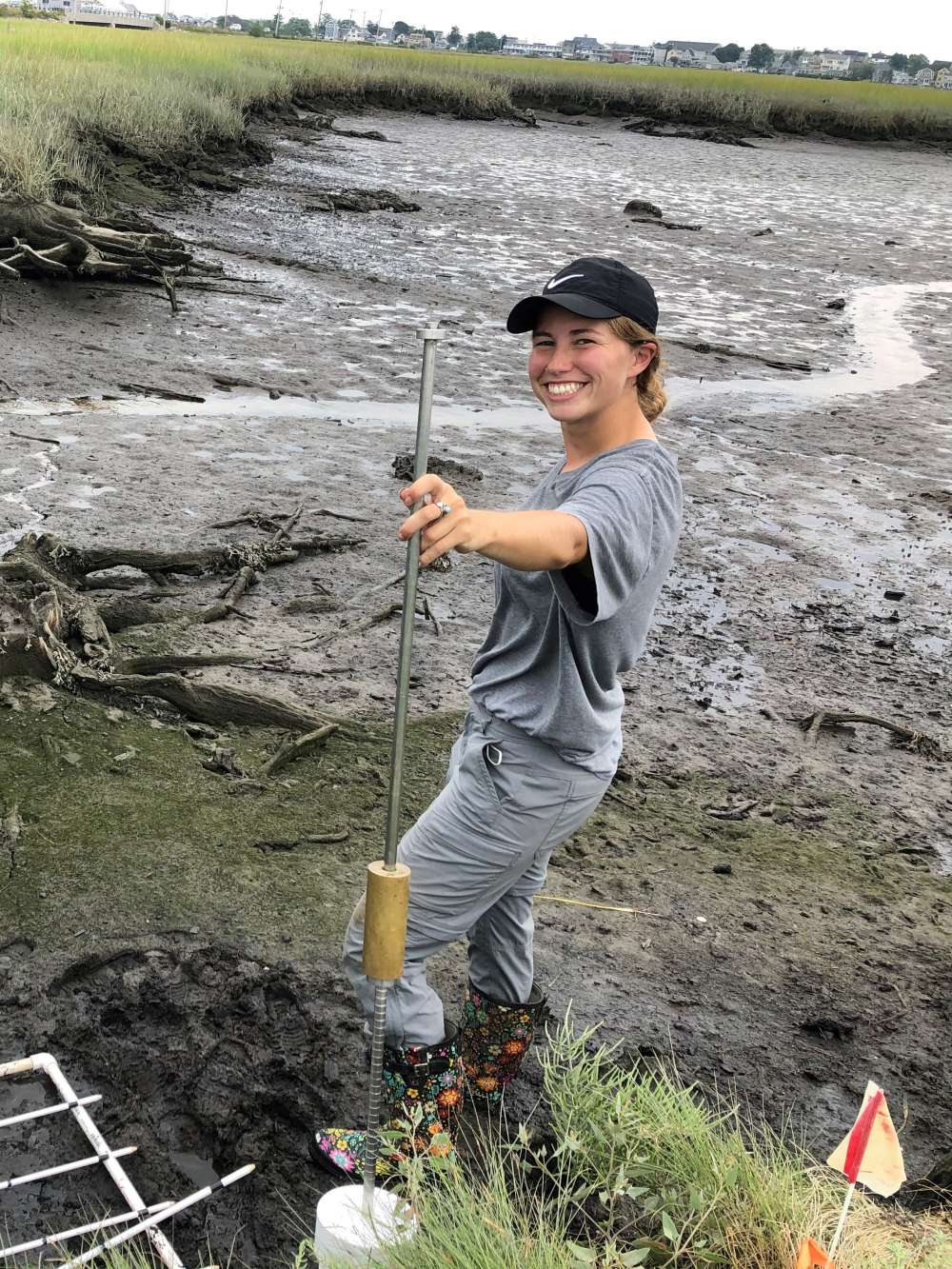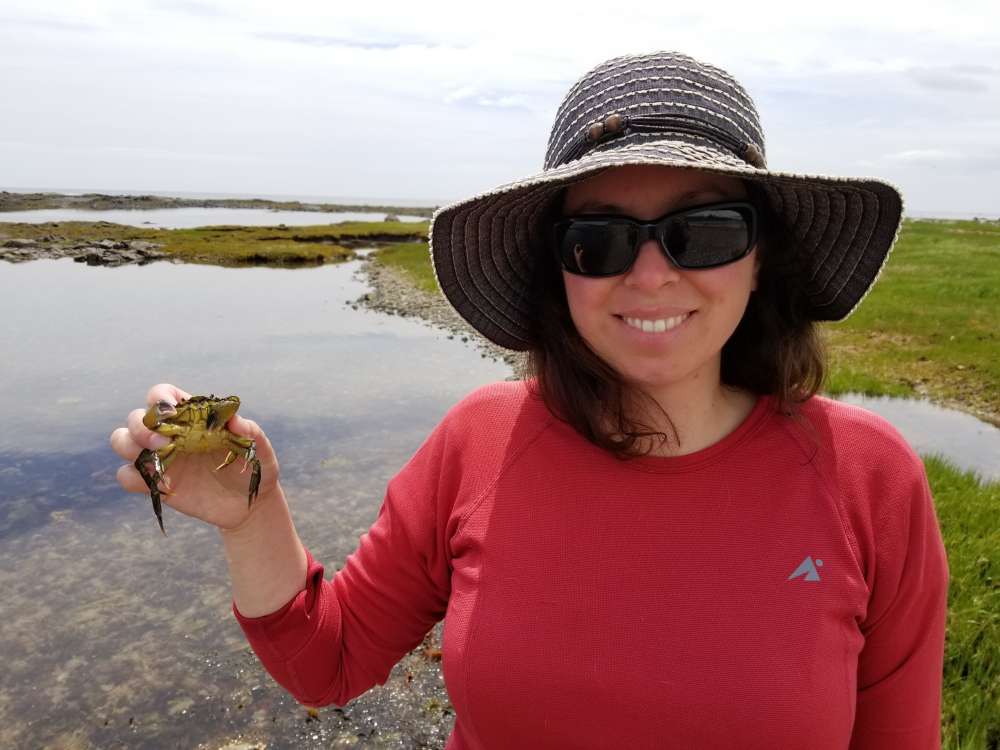The Wrack
The Wrack is the Wells Reserve blog, our collective logbook on the web.
The Wrack is the Wells Reserve blog, our collective logbook on the web.
Summer 2020 has been a challenging time for the reserve and for the rest of the world. But even a pandemic couldn’t stop us from continuing our long-term monitoring and research projects… at a safe distance from one another and with masks on! And it certainly did not stop these four determined and ambitious emerging scientists—Phoebe Oehmig, Amanda Giacchetti, Christopher Ring, and Katrina Zarrella Smith—from continuing their education and pursuing their career goals through internships and seasonal positions. Let these bright individuals give you a glimpse of their time here.

Hi, I’m Phoebe Oehmig! I have one more semester at Middlebury College, where I’m a conservation biology major and captain of the cross country team. My internship has shown me that this is exactly the type of work I wish to be doing career-wise. I’m looking into Ph.D. programs in marine biology for next fall. And a career goal would certainly be to return to Wells Reserve as a researcher!
Wow, I have been all over the place, helping out wherever I’m needed and gaining an array of experience! I have done a little bit of everything, from larval fish tows and larval fish picking, to being out in the tide pools helping out with MIMIC (Marine Invader Monitoring and Information Collaborative), as well as doing pore water well readings in the marsh. Back in the lab, I spent many hours taking photos of lobster eggs and measuring their eyespots, along with assisting with the larval lobster swimming trials. Who would have known, but lobster eggs are quite stunning!
The highlight of the summer was when Laura, Amanda, and I took a trip up the coast to Harpswell for some rock flipping and crab hunting to collect invasive Asian shore crabs. It was a misty morning on the rocky beach, and you could hear the sound of the lobster boat engines running in the fog beyond. It brought me right back to my childhood, where I spent many summer mornings in Harpswell playing in the tide pools and scrambling through the seaweeds looking for crabs. Twenty years have passed since I first started crab hunting, and I hope I can continue to keep doing this for another twenty, and another twenty…
I love the diversity of work the reserve offers throughout the day. Almost every day I had time out in the marsh, tide pools, or dock, balanced with time spent inside the lab using the microscope or weighing larval lobsters, and all mixed with plugging data into Excel or measuring lobster eyespots using ImageJ. This variety of work meant I loved every minute of what I was doing (including cleaning out the fishy freezer!), so that field time never got too hot and sweaty and computer tasks never too mundane.
My other job in the summer is running 50 miles a week in preparation for cross country season, so running the peaceful trails around the reserve every morning and evening was an absolute dream. I encountered rabbits, deer, and whole families of turkeys!
If you’ve seen my sneakers then you probably already know, I’m a big whale shark girl! During my time in Australia, I did an internship with the whale shark research and conservation group ECOCEAN, where I fell in love snorkeling alongside these graceful giants. Alas, my Sperry whale shark patterned sneakers will probably be the closest I’ll ever come to transforming into the most magical creature in the sea!

Chris Ring, graduated from Unity College with a master’s degree in Sustainable Natural Resource Management. Restarting with a new career soon (hopefully) with stewardship and research focused on habitat studies and conservation.
Three projects have occupied me the most this summer. The first involves a project led by Sue Bickford in soundscape ecology. I’ve spent many hours organizing and clipping data (sound recordings) of the habitats at the reserve in order to process the information in R Studio. Ultimately it will help the reserve map biodiversity here and provide a baseline. Another project involves helping the reserve develop a new program in NDVI (Normalized Differentiated Vegetation Index) studies using low cost unmanned aerial vehicles (drones). The drone will help map vegetation communities on our marsh. I also have a larger mapping project of the Hope Cemetery in Kennebunk.
There haven’t been many, so they all rank highly. Perhaps the best was joining Laura Crane at the Webhannet Marsh to deploy water loggers. The day was quite hot, but in five feet of tidal water (at the creek crossings), life was good.
The people here are terrific. Everyone is friendly, willing to share their experience and insights, and happy to foster an intern’s learning.
Definitely a common seal. I love swimming and surfing, and since I was a child, I have mimicked seals when I play in the waves or do low depth free dives. Their curiosity is always admirable to me. I can’t even count how many times I’ve been one of the only surfers in a big messy autumn swell and some seal has come around to check me out.

My name is Amanda Giacchetti and I recently graduated from the University of New Hampshire with a degree in Earth Sciences and a concentration in Oceanography.
This past summer, I have had the privilege to work on an American lobster project, but also had a chance to carry out plankton tows at the harbor and take part in some salt marsh monitoring.
Taking a trip up to beautiful Bailey Island in Harpswell, where we collected Asian shore crabs hiding beneath the rocks and afterwards ate delicious crabmeat and lobster rolls on a dock by the ocean!
My favorite part has been getting the chance to be involved in a variety of different projects. The hands-on work I have had the opportunity to assist with has been a great experience and truly rewarding.
I would be a whale shark. These gentle giants are absolutely beautiful. Though they are the largest fish in the world, reaching lengths of over 40 feet, they are filter feeders who eat tiny plankton. Such an amazing, harmless creature!

My name is Katrina Zarrella Smith and I hold a bachelor’s degree in Human Ecology from College of the Atlantic. I am entering the Ph.D. program in Organismic and Evolutionary Biology at the University of Massachusetts Amherst this fall.
Some of my projects take me into the field and some take me on a deep dive into data analysis. I have been working on identifying when and where green crabs are moving within our estuary and what their population structure looks like to support an understanding of how this invasive species is thriving under current conditions. I have also been working with data collected by citizen scientists to track the introduction and abundance of invasive marine species in southern Maine. There is no shortage of projects to get involved in. I also have been fishing for sticklebacks—a small, estuarine fish—to provide for genetic studies, and digging into female American lobster reproduction to support efforts to assess the stock of this important commercial species.
I’ve spent countless hours over the years in the estuaries of Maine and it is always a new adventure to take in the fresh air, listen to the sounds of flowing water, and scout for creatures. A recent trip out to the marsh with fellow intern Chris Ring certainly delivered on the surprises. In a salt pool in the high marsh, we saw the unmistakable lengthy reach of a crab’s colored claws and a rear pair of flattened, blue legs paddling away from us. It was a 7-inch blue crab, and the first time I have seen a live adult in Maine. This crab is commonly found in warm waters of the east coast and the Gulf of Mexico. Although it has been sighted as far north as Nova Scotia, observations are rare in Maine. So it was even more surprising to see another on a SCUBA dive in Ogunquit a few weeks later.
The Wells Reserve is a special place where many different types of people are coming together related to research, education, stewardship, community, exploration, and recreation. I love having the opportunity to learn from and interact with this diverse group of people. And the view from the trails here doesn’t hurt either.
I would be an octopus. We both can unscrew a jar to get the food out, do our best work at night, keep a tidy den, and have our arms on everything.